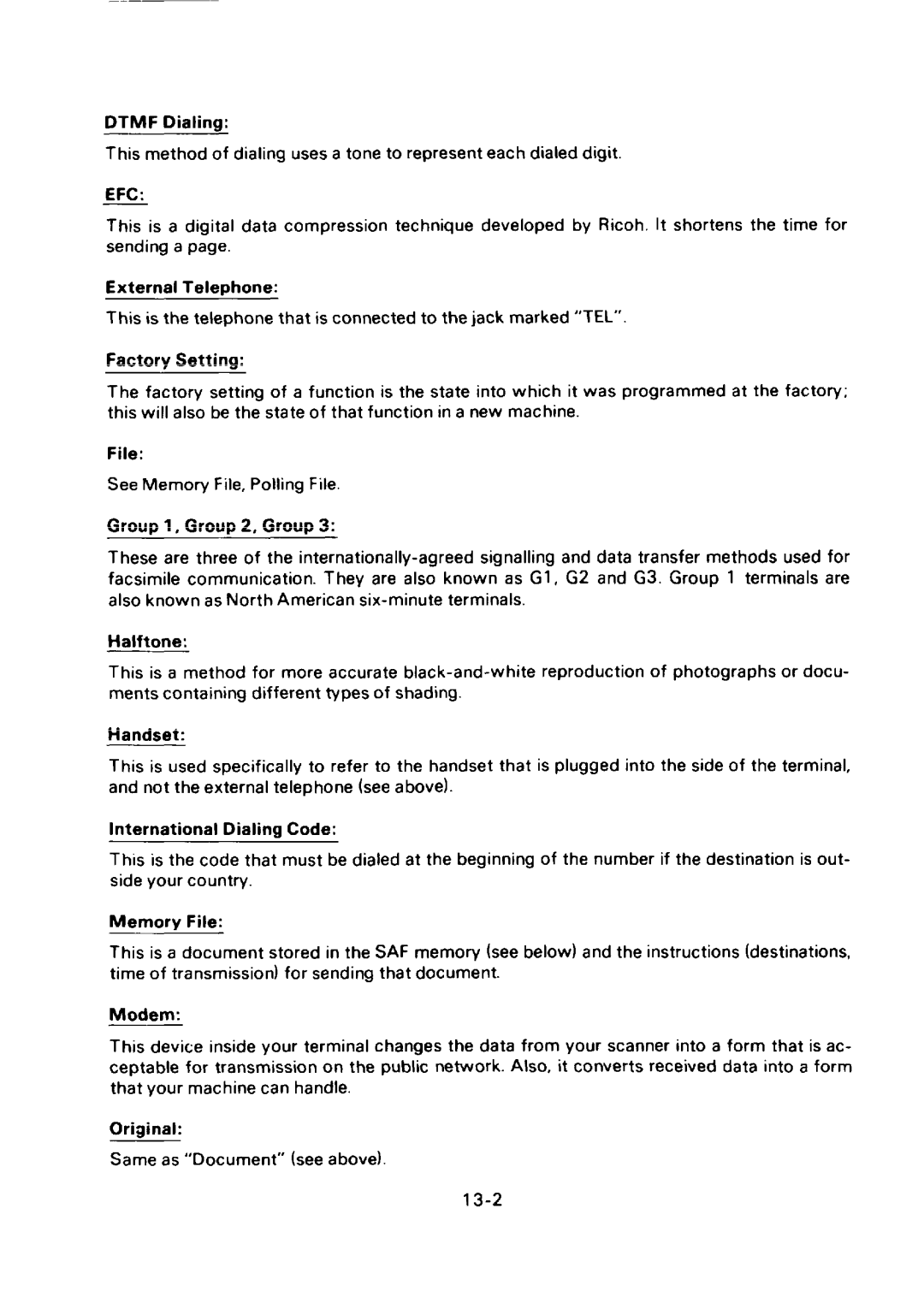
DTMF Dialing:
This method of dialing uses a tone to represent each dialed digit.
EFC:
This is a digital data compression technique developed by Ricoh. It shortens the time for sending a page.
External Tele~hone:
This is the telephone that is connected to the jack marked “TEL”.
Factory Setting:
The factory setting of a function is the state into which it was programmed at the factory; this will also be the state of that function in a new machine.
File:
See Memory File, Polling File.
Group 1, Group 2, Group 3:
These are three of the
Halftone:
This is a method for more accurate
Handset:
This is used specifically to refer to the handset that is plugged into the side of the terminal, and not the external telephone (see above).
International Dialing Code:
This is the code that must be dialed at the beginning of the number if the destination is out- side your country.
Memory File:
This is a document stored in the SAF memory (see below) and the instructions (destinations, time of transmission) for sending that document.
Modem:
This device inside your terminal changes the data from your scanner into a form that is ac- ceptable for transmission on the public network. Also, it converts received data into a form that your machine can handle.
Original:
Same as “Document” (see above).
